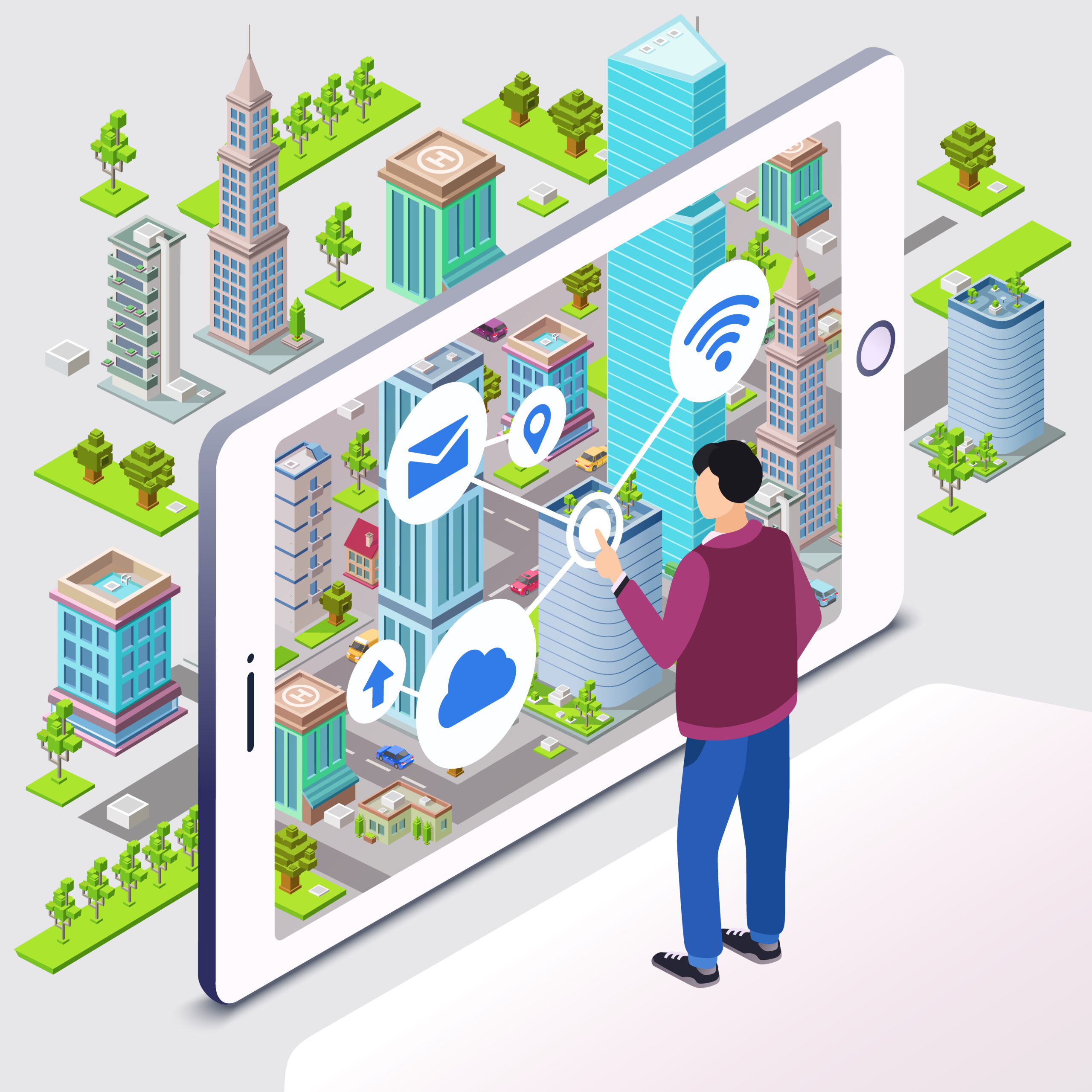The city skyline of 2023 is more than just a testament to human architectural prowess—it’s a living, breathing entity, pulsating with interconnected systems. As urban areas burgeon and populations swell, a seamless integration of technology becomes not just desirable but vital. Smart cities, once a concept from futuristic novels, are now our present and will shape our collective future.

What Makes a City “Smart”?
At the heart of a smart city lies the convergence of information technology, IoT devices, and infrastructure. These elements, when synchronized, aim to enhance the quality of urban living, ensuring sustainability, efficiency, and improved public services.
The Digital Infrastructure: The Nervous System of Smart Cities
Every smart city relies on a robust digital infrastructure that collects, analyzes, and acts upon data in real time.
- Sensors Everywhere: From traffic lights to public bins, sensors gather crucial data points. These could include information on traffic congestion, waste levels, air quality, and even public energy consumption.
- Data Centers & Cloud: This data needs to be processed and analyzed. Powerful data centers, often backed by cloud solutions, provide the computational muscle, ensuring that every byte of data serves a purpose.
Transportation: Moving Smarter, Not Harder
The daily commute is a significant pain point in many urban areas. Smart cities aim to change this narrative.
- Intelligent Traffic Management: By analyzing traffic flow in real-time and predicting congestion points, traffic lights, and signals can be adjusted to ensure smoother flow, reducing congestion and pollution.
- Smart Public Transit: Imagine buses and trains that adjust their frequency based on real-time demand or autonomous public shuttles that ferry you from your doorstep to the subway. This isn’t science fiction—it’s the smart city’s answer to urban mobility.
Energy: The Sustainable Pulse of the City
Energy consumption and its environmental ramifications are at the forefront of the smart city model.
- Smart Grids: These grids not only distribute energy but also gather data on consumption patterns, helping optimize energy distribution and reduce wastage.
- Renewable Integration: Smart cities seamlessly integrate renewable energy sources, like solar and wind, adjusting energy distribution based on real-time generation and demand.
Waste Management: The Circular Approach
Waste is an inevitable by-product of urban living. Smart cities, however, turn this challenge into an opportunity.
- Smart Collection: Sensors in bins relay information about their fill level, allowing for optimized collection routes, reducing fuel consumption and ensuring timely waste collection.
- Waste-to-Energy: Instead of landfills, smart cities are increasingly looking at converting waste into energy, ensuring that nothing truly goes to waste.
Public Safety & Health: The Digital Guardians
In a connected city, safety and health services evolve, becoming more proactive than reactive.
- Surveillance & AI: Cameras equipped with AI can detect unusual activities, from potential criminal behavior to accidents, ensuring rapid response.
- Health Monitoring: Wearables and mobile apps can monitor public health trends, predicting potential outbreaks or health crises, and allowing authorities to act preemptively.
The Human Element: Engaged and Empowered Citizens
While technology is the backbone of smart cities, its soul is the populace. Engaging platforms, feedback systems, and digital governance models ensure that the citizens are active participants in shaping their city’s future.
Conclusion
The vision of smart cities in 2023 is a blend of innovation, sustainability, and enhanced quality of life. It’s a world where technology serves the populace, addresses urban challenges, and paves the way for a sustainable, efficient, and interconnected urban future. As the sun sets on the city skyline, the glimmering lights are a reminder—not of mere electricity but of a city that thinks, acts, and evolves.